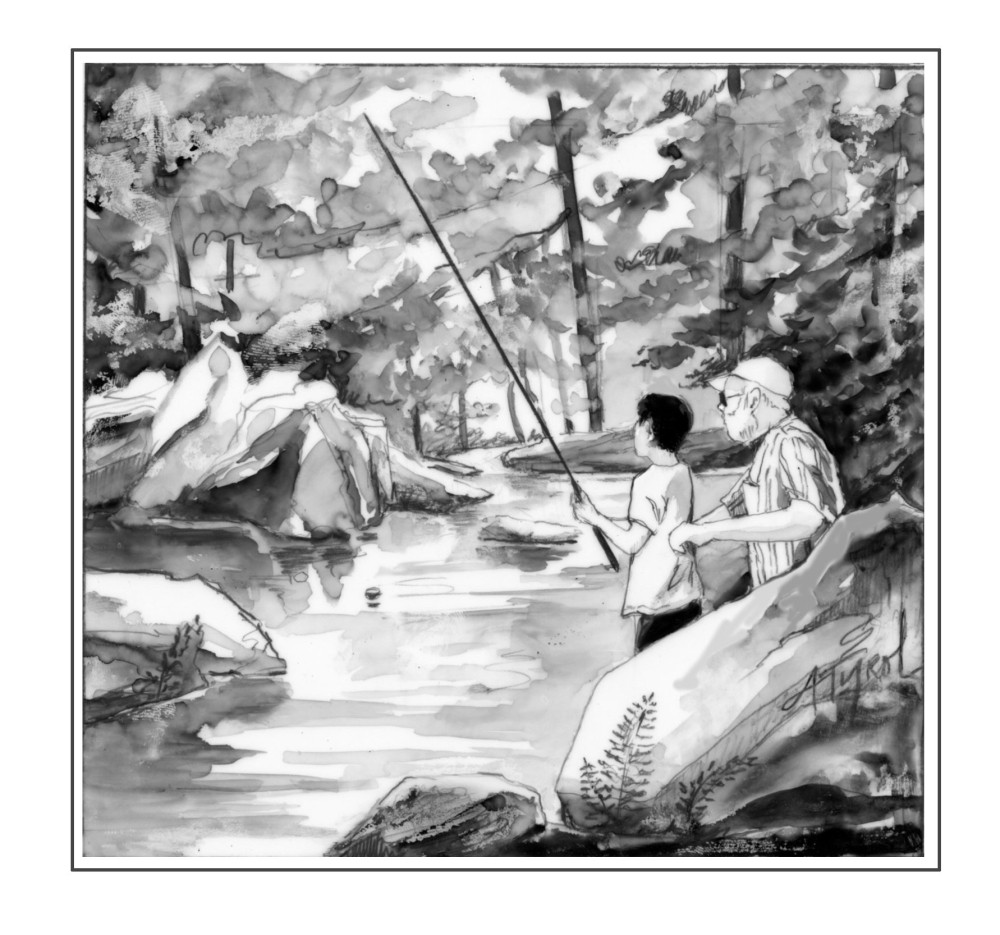
Few activities in this world are better for the soul than taking a child fishing. Most anglers recall fondly the early days of their youth when that person, be it a parent, grandparent, or family friend, first took them out on the water and introduced them to the world of fishing.
While those days may not have been incredibly productive from a fish-caught perspective, they did lead, more often than not, to those first, faint sparks that later grew into a love for the sport. Taking a child fishing is to teach them a skill and instill in them an appreciation for the outdoors.
The first and foremost point in any angling adventure with children is having the appropriate equipment. A child’s fishing rod should be small, simple to cast, and able to absorb a lot of punishment. A short, durable rod with a simple push-button casting reel is best. Make sure the line is of at least 6-pound test to ensure that no fish are lost while being lifted triumphantly from the water.
Fish hooks should similarly be basic and fairly small, rarely going larger than a size six with eight or ten being ideal for most species. A bobber or float, set a foot or two above the bait, is an excellent addition as it allows the child to actually see fish bite. Unless the bobber is set to the proper depth, however, it can be a hindrance that keeps the bait out of reach of the fish, so pay attention to proper placement.
As far as bait goes, crickets, crawfish, minnows, and packaged artificial bait all have their place, but one can never go wrong with the time-tested and always-successful worm. Worms can be purchased at gas stations and outdoor stores or simply dug from the ground or hunted on rainy nights. Whether they are nightcrawlers, earthworms, or dillies, nearly every fish in freshwater will eat them.
Worms are hands-down the best bait to use in any fishing situation involving kids. Worms are easy for a child to manage, as nearly any method – from winding them onto the hook, pushing the point through the body at different intervals, or simply hooking them through the center of the body – will attract fish.
Once the proper equipment is in hand, the next phase of concentration is the fishing location. Appropriate spots to take young children fishing should be both within easy walking distance of your vehicle and reachable without having to scale too steep of a bank. Scout ahead of time and look for an area with a likely concentration of fish and where a child can be easily monitored while fishing. Boat docks provide a lot of cover for smaller panfish, and shallow areas along the road where you can literally see the fish swimming are a good bet.
Having lots of fish available is also important. Most stocked species are put into ponds and lakes in the spring, and most native species become most active during the summer months. Sunfish, such as bluegill and pumpkinseeds, are ideal for children, though the larger dorsal fin along their backs have small spines, so fish should be grasped front to back to keep the spines flat against the body. These colorful and voracious fish usually travel in schools, are generally found in shallow water (a plus when fishing with kids), and will continuously bite throughout the day. They also will rise high in the water to feed, so bobbers are very effective when pursuing them.
Yellow perch are also good quarry for anglers fishing with children. Like sunfish, perch are also colorful, travel in schools, and feed throughout the day. They do swim a bit deeper than sunfish, but are usually found in fairly shallow, weedier areas. Bobbers can be effective with perch, but perch can be caught just as well without them.
Brook trout, or “Brookies”, are also an excellent choice for beginning anglers. These delicate and colorful fish can be found in most small, cold streams around the Northeast. They can be tricky fish that spooks easily, so using a small hook with a larger bait is the most effective set up. They are best caught by following a length of stream, dropping the bait into the slow, deeper pools, and feeling for a strike.
As adult anglers, we may sacrifice our own satisfaction when fishing with children, who are often not willing to wait patiently for “the big one” or to endlessly cast a lure. Kids want production, they want to catch a lot of fish, and they want to catch them fast. We can use this desire to lure them into experiencing a simpler moment in life, when the whole world is concentrated on a red and white bobber floating gently on the water.

